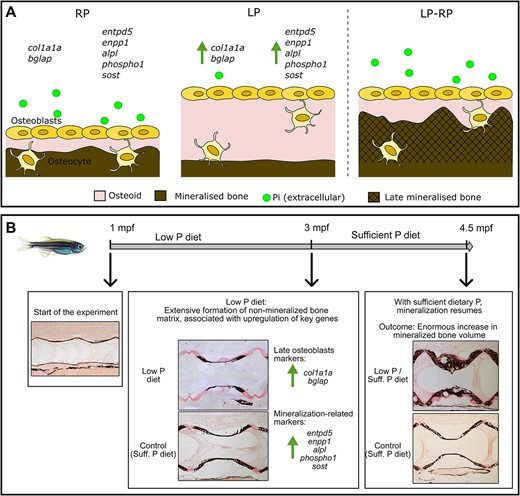Fig. 6 Schematic view of the effects of dietary P intake on bone formation and mineralization. (A) In presence of regular dietary P (RP), the non-mineralized bone matrix secreted by osteoblasts, named osteoid, mineralizes after deposition. When low dietary P (LP) is provided, bone matrix production is stimulated, accompanied by the increased expression of the osteoblast specific markers collagen type I (col1a1a) and osteocalcin (bglap). Under LP conditions, genes important for bone mineralization are upregulated, such as the ectonucleotide pyrophosphatase phosphodiesterase 1 (enpp1), the ectonucleoside triphosphate/diphospho-hydrolase 5 (entpd5), the tissue non-specific alkaline phosphatase (alpl), the phosphatase orphan 1 (phospho1), and sclerostin (sost). Thus, under LP conditions, osteoblasts increase the production of non-mineralized bone matrix and the expression of genes required for mineralization. When sufficient dietary P is provided (LP–RP), the mineralization of the non-mineralized matrix resumes, resulting in increased mineralized bone volume. (B) Summary of the main results of the zebrafish dietary P experiment. The LP diet stimulates bone matrix formation first associated to upregulation of key genes. Upon sufficient dietary P administration, newly formed bone matrix mineralizes, resulting in enormous increase in mineralized bone volume.
Image
Figure Caption
Acknowledgments
This image is the copyrighted work of the attributed author or publisher, and
ZFIN has permission only to display this image to its users.
Additional permissions should be obtained from the applicable author or publisher of the image.
Full text @ JBMR Plus

